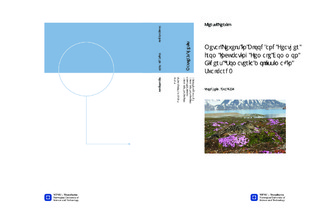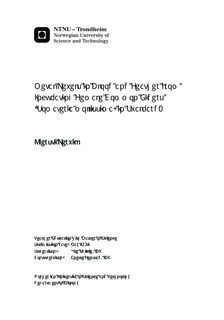| dc.description.abstract | In the present study, the concentration of selected metals and metalloids were determined in blood and feathers of 29 incubating female common eiders (Somateria mollissima). The birds were sampled at the island Storholmen in Kongsfjorden, Svalbard, at the end of the nesting season of 2011. In order to increase the knowledge of metal levels of the female common eiders nesting in Svalbard, concentration of the non-essential metals mercury (Hg), lead (Pb), arsenic (As), and cadmium (Cd) and the essential metals selenium (Se), manganese (Mn), copper (Cu), zinc (Zn), calcium (Ca), and iron (Fe) were determined by inductively coupled plasma mass spectrometry (ICP-MS). The present findings suggest that concentration of the non-essential metals in blood and feathers from female common eiders nesting in Kongsfjorden, were below toxicity threshold. However, in some individuals, concentrations of Se in feathers were close to the toxicity threshold. All together, these results indicate that the levels of metals do not seem to be an immediate threat to common eider colonies nesting in Svalbard. At the same time, it is important to recognize that the birds sampled in the present study represent the most successful individuals within the population; having completed a long migration, found a partner and produced eggs. It is therefore a possibility that birds with high enough levels of non-essential metals to affect reproduction were not breeding during the season of 2011. Metal concentrations in blood may provide a picture of recent dietary exposure from areas close to the breeding ground, while concentrations in feathers represent blood levels at the time of molt, when the female common eiders migrate away from Svalbard. The non-essential metals with the highest concentration in blood were Hg (117 μg/kg ± 31.9), followed by Pb (56.28 μg/kg ± 38.92), while in feather the highest concentrations were found for As (1.10 μg/g ± 1.36) and Hg (0.969 μg/g ± 0.328). These findings suggest that the female common eiders are subject to variations in metal exposures throughout the year. Only two metals (Se [r = 0.51, p = 0.005] and Cd [r = 0.467, p = 0.011]) showed significant positive correlation between blood and feather. Indicating that blood samples should be used when investigating recent dietary uptake, while feather samples should be used to represent metal levels on wintering grounds. No sign of metal mimicry was observed when investigating feather samples. This may be related to the close homeostatic control of essential metals, and may indicate that the levels of essential metals in female common eiders were sufficient, since mimicry most often become visible at low dietary levels of essential metals. | nb_NO |

